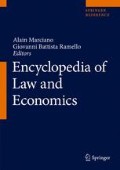Access this chapter
Tax calculation will be finalised at checkout
Purchases are for personal use only
References
Agarwal S, Driscoll JC, Gabaix X, Laibson D (2009) The age of reason: financial decisions. Brook Pap Econ Act 40(2):51–117
Bernartzi S, Thaler R (2004) Save more tomorrow: using behavioral economics to increase employee savings. J Polit Econ 112(1):164–187
Bernheim BD, Garrett DM, Maki DM (2001) Education and saving: the long-term effects of high school financial curriculum mandates. J Public Econ 80:435–465
Boushey H, Weller CE (2006) Inequality and household economic hardship in the United States of America. DESA working paper 18
Choi JJ, Laibson D, Madrian BC, Metrick A (2004) For better or for worse: default effects and 401(k) savings behaviour. In: Wise D (ed) Perspectives in the economics of aging. University of Chicago Press, Chicago, pp 81–121
Clark RL, d’Ambrosio MB, McDermed A, Sawant K (2006) Retirement plans and saving decisions: the role of information and education. J Pension Econ Financ 5(1):45–67
Cronqvist H, Thaler RH (2004) Design choices in privatized social-security systems: learning from the Swedish experience. Am Econ Rev 94(2):424–428
Croson R, Gneezy U (2009) Gender differences in preferences. J Econ Lit 47(2):448–474
Elster J (1996) Rationality and the emotions. Econ J 106:136–197
Fisher P (2003) Evaluating financial education: history, theory & application. Unpublished master’s thesis, Ohio State University, Columbus
Frederick S, Loewenstein G, O’Donoghue T (2002) Time discounting and time preference: a critical review. J Econ Lit 15:351–401
Gale WG, Levine R (2010) Financial literacy: what works? How could it be more effective? Paper presented at the first annual conference of the Financial literacy research consortium, Washington, DC, 18 Nov 2010
Gigerenzer G (2007) Gut feelings: the intelligence of the unconscious. Viking, New York
Hilgert MA, Hogarth JM, Beverly SG (2003) Household financial management: the connection between knowledge and behavior. Fed Reserv Bull 89(7):309–322
Lusardi A (2004) Saving and the effectiveness of financial education. In: Michell O, Utkus S (eds) Pension design and structure: new lessons from behavioral finance. Oxford University, New York, pp 157–184
Lusardi A, Mitchell O (2007) Financial literacy and retirement preparedness: evidence and implications for financial education. Bus Econ 42(1):35–44
Lusardi A, Mitchell O (2011) Financial literacy around the world: an overview. J Pension Econ Financ 10(4): 497–508
Lusardi A, Mitchell O (2014) The economic importance of financial literacy: theory and evidence. J Econ Lit 52(1):5–44
Lusardi A, Tufano P (2009) Debt literacy, financial experiences, and overindebtedness. NBER working paper 14808
OECD (2006) The importance of financial education. Policy brief. OECD
OECD (2016) Financial education in Europe: trends and recent developments. OECD
Ross L, Nisbett RE (2011) The Person and the situation: perspectives of social psychology. McGraw-Hill, New York
SEC (1999) The facts on saving and investing. Office of investor education and assistance securities and exchange commission
Simon HA (1978) Rationality as a process and as a product of thought. Am Econ Rev 70:1–16
Thaler R, Sunstein C (2008) Nudge: improving decisions about health, wealth, and happiness. Yale University Press, New Haven
Tversky A, Kahneman D (1981) The framing of decisions and the psychology of choice. Science 211(4481):453–458
Tversky A, Kahneman D (1991) Loss aversion in riskless choice: a reference-dependent model. Q J Econ 106(4): 1039–1061
US Bureau of Economic Analysis (2002) Data on personal savings as a percentage of disposable personal income
Willis LE (2011) The financial education fallacy. Am Econ Rev Pap Proc 101(3):429–434
Author information
Authors and Affiliations
Corresponding author
Editor information
Editors and Affiliations
Rights and permissions
Copyright information
© 2019 Springer Science+Business Media, LLC, part of Springer Nature
About this entry
Cite this entry
Novarese, M., Di Giovinazzo, V. (2019). Financial Education. In: Marciano, A., Ramello, G.B. (eds) Encyclopedia of Law and Economics. Springer, New York, NY. https://doi.org/10.1007/978-1-4614-7753-2_713
Download citation
DOI: https://doi.org/10.1007/978-1-4614-7753-2_713
Published:
Publisher Name: Springer, New York, NY
Print ISBN: 978-1-4614-7752-5
Online ISBN: 978-1-4614-7753-2
eBook Packages: Economics and FinanceReference Module Humanities and Social SciencesReference Module Business, Economics and Social Sciences

